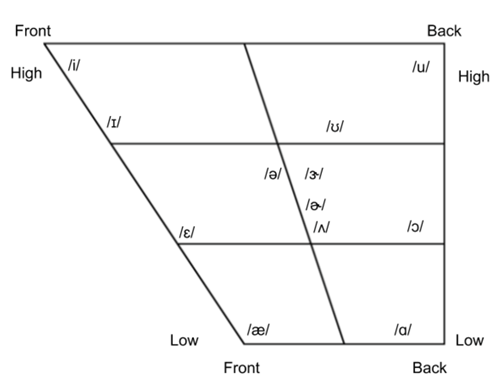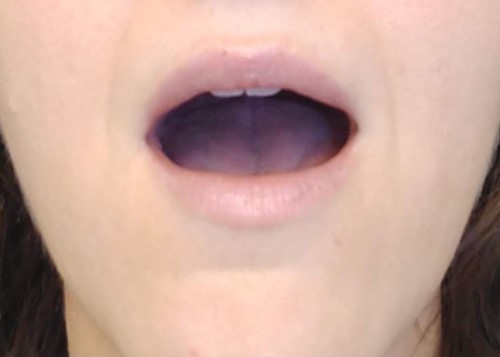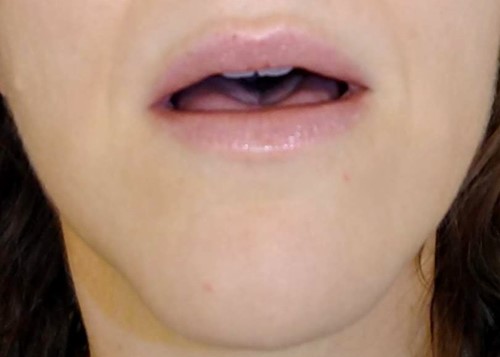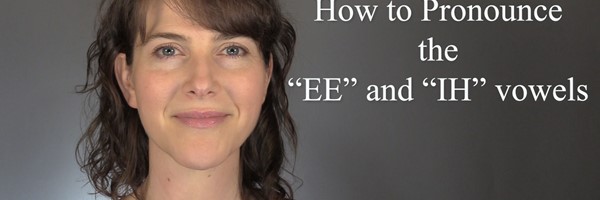The AH in father and the UH in butter can be challenging for non-native English speakers to pronounce. This is because both of these sounds are made in the back of the mouth, and they share similar tongue, lip, and jaw positions. But with a little practice, you should be able to see and hear the differences between these sounds.
The AH /ɑ/ Vowel
The AH vowel is considered a low, back vowel, meaning it is made with the jaw dropped low and the tongue pulled back into the mouth. You may even feel some tension in the tongue as you say this sound because the tongue is low and flat.
If you look at the vowel quadrilateral, you’ll notice the AH vowel is located in the lower right hand corner. It is the lowest and farthest back vowel that is made in American English.

Listening Practice
Here are some words with the AH sound. cop, dog, log, bog.
The UH /ʌ/ Vowel
The UH sound is a central vowel. The jaw drops down low, but not as much as it did for the AH sound, and the tongue is more relaxed and neutral in the mouth.
Look at the vowel quadrilateral again to see if you can spot the differences between the locations of the AH and the UH vowels.
Listening Practice:
Here are some words with the UH sound. bug, lug, cup, dug.
So the differences between the AH in father and the UH in butter are with the jaw and tongue positioning. For the AH sound, the jaw is dropped low, and the tongue is pulled back and flat in the mouth. It also has some tension. But for the UH sound, the jaw is not as low, and the tongue is more neutral and relaxed.

The AH Vowel

The UH Vowel
Thanks for watching! And I'd love to hear from you - contact me to learn how we can work together to perfect your American English pronunciation!
******************************************************************************************************
Interested in more American English pronunciation practice? Be sure to check out some of my most popular online resources (all free!):
- Dark L and Light L exercises: Free, downloadable and printable pdf
- Semi-Occluded Vocal Tract (SOVT) exercises: Free, downloadable and printable pdf
- Stressed and Unstressed Syllables exercises: Free, downloadable and printable pdf
- AH /ɑ/ and UH /ʌ/ Vowel pronunciation exercises: Free, downloadable and printable pdf
- American R /ɹ/ Consonant pronunciation exercises: Free, downloadable and printable pdf
- Vowel to Vowel Linking exercises: Free, downloadable and printable pdf
- Consonant to Vowel Linking exercises: Free, downloadable and printable pdf
- Word Reductions and English Rhythm exercises: Free, downloadable and printable pdf
- N /n/ and NG /ŋ/ Consonant pronunciation exercises: Free, downloadable and printable pdf
- Respiratory and Breath Support exercises: Free, downloadable and printable pdf
- International Phonetic Alphabet (IPA) for English Vowels: Free, downloadable and printable pdf
- International Phonetic Alphabet (IPA) for English Consonants: Free, downloadable and printable pdf
- Resonatory and Vocal Projection exercises: Free, downloadable and printable pdf
- Articulatory and Tongue Twister exercises: Free, downloadable and printable pdf
- Glottal Stop T /ʔ/, Flap T /ɾ/, and True T /t/ exercises: Free, downloadable and printable pdf
- EE /i/ and IH /ɪ/ Vowel pronunciation exercises: Free, downloadable and printable pdf
- Presentation Skills Training exercises: Free, downloadable and printable pdf
- Sentence-level Stress and Content Word Stress exercises: Free, downloadable and printable pdf



